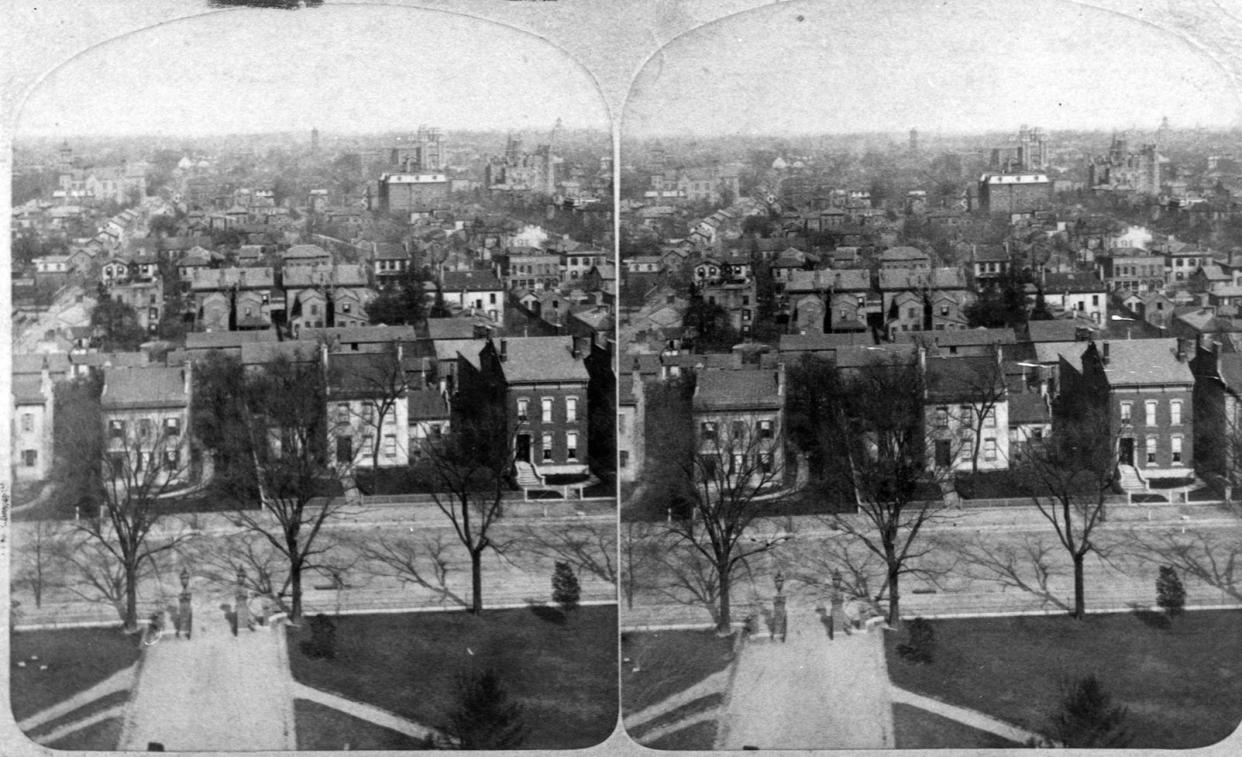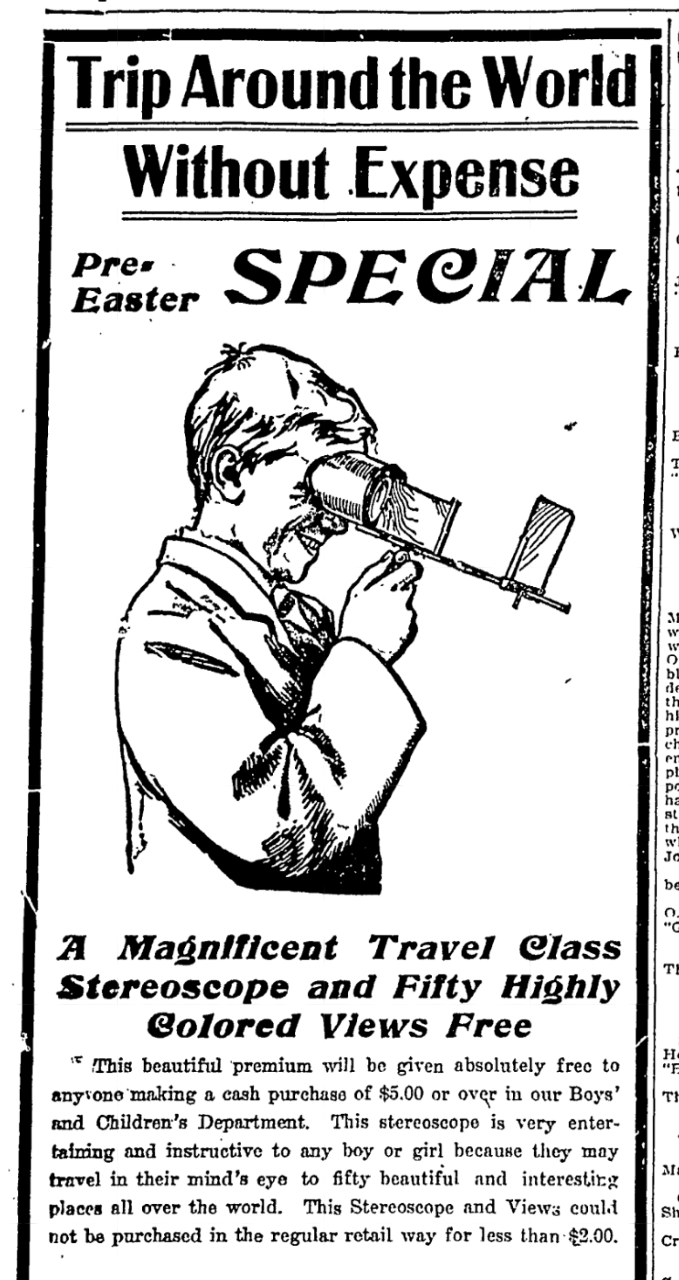This media is history: Before motion pictures, TV, and social media, the stereoscope ruled

To share intriguing pictures with your family and friends during the Victorian era, you would purchase stereoscope viewing cards and show them to people in your home. Call it the “Instagram” of the late 1800s.
The scenes were taken with a camera that produced double-image cards. When two images, taken from slightly different angles, were viewed through a stereoscopic device, they would present one fused image, giving the illusion of three-dimensional depth.
The stereoscope was a wildly popular item from about 1850 to the 1930s and was a familiar fixture in the parlors of many homes. It had a tin hood and a slide for cards mounted on a wooden base. People bought cards of all kinds (similar to postcards).
There were views of the Civil War, cities, industry, natural history such as Yellowstone or the Swiss Alps, religious views, comedy, the arts and more. The stereoscope’s popularity reached its height in Europe about 1860 and in America about a decade later.
A Dispatch ad in 1872 touted stereoscopes for $1, and in 1907, you could get one for free, along with 50 view cards, as a bonus for spending $5 or more in the children’s department at Bond’s.

It was the entertainment of the times, according to a Dispatch Sunday magazine lookback story published 40 years ago, “and compares to TV today.” In later generations, the “View-Master” was the trademark of a similar stereoscopic device, which used loadable “reels” of color photos of tourist attractions, rocks and minerals, and other wonders. View-Masters are still a toy on the market today.
In 1953, The Dispatch reported that the Columbus Public Library had acquired eight View-Masters so bedridden patients could take “visual trips” to spots all over the country — to places like the Grand Canyon, Alaska, and Niagara Falls. Seven of the devices were used in local hospitals and the eighth was loaned for home use.
As radio and motion pictures became more popular, the old-fashioned stereoscope fell out of favor. The Johnson-Shaw Stereoscopic Museum in Meadville, Pennsylvania, preserves that slice of history.
Contributor Linda Deitch was a Dispatch librarian for 25 years.
This article originally appeared on The Columbus Dispatch: Social media history: The stereoscope, forerunner of the View-Master

